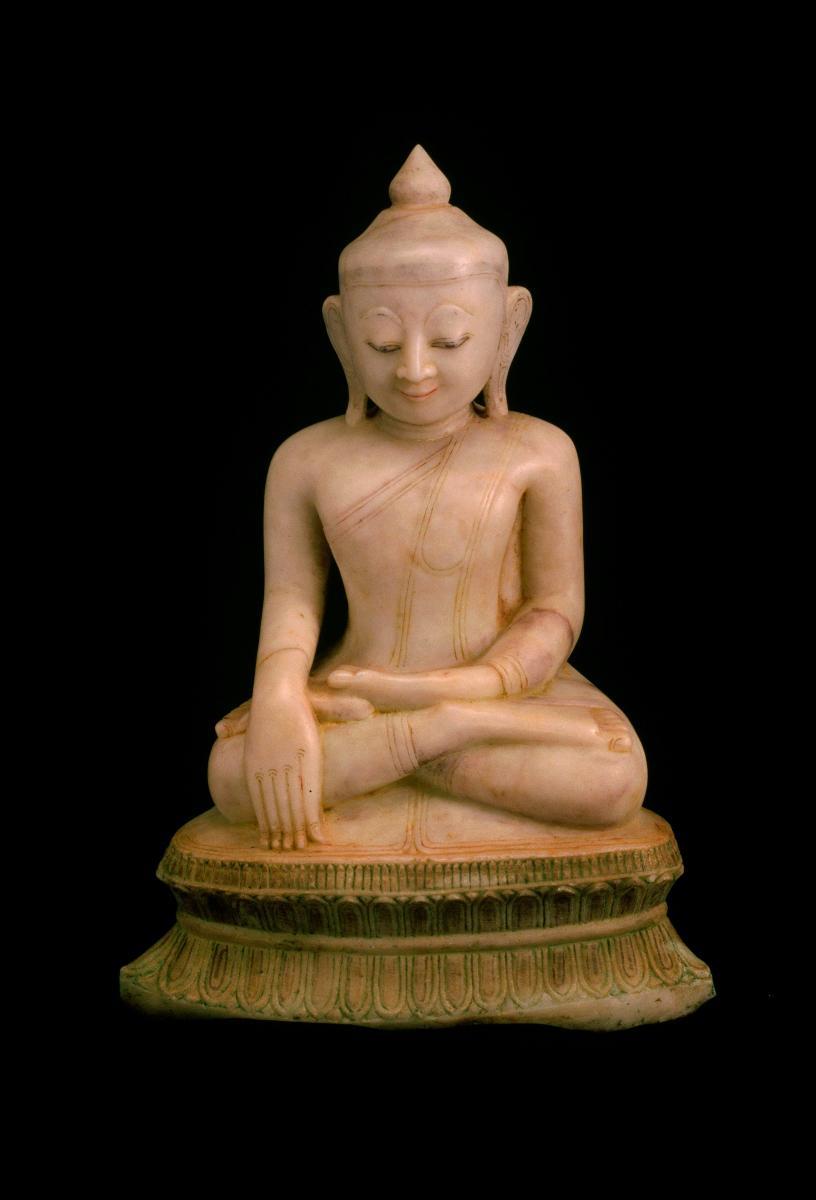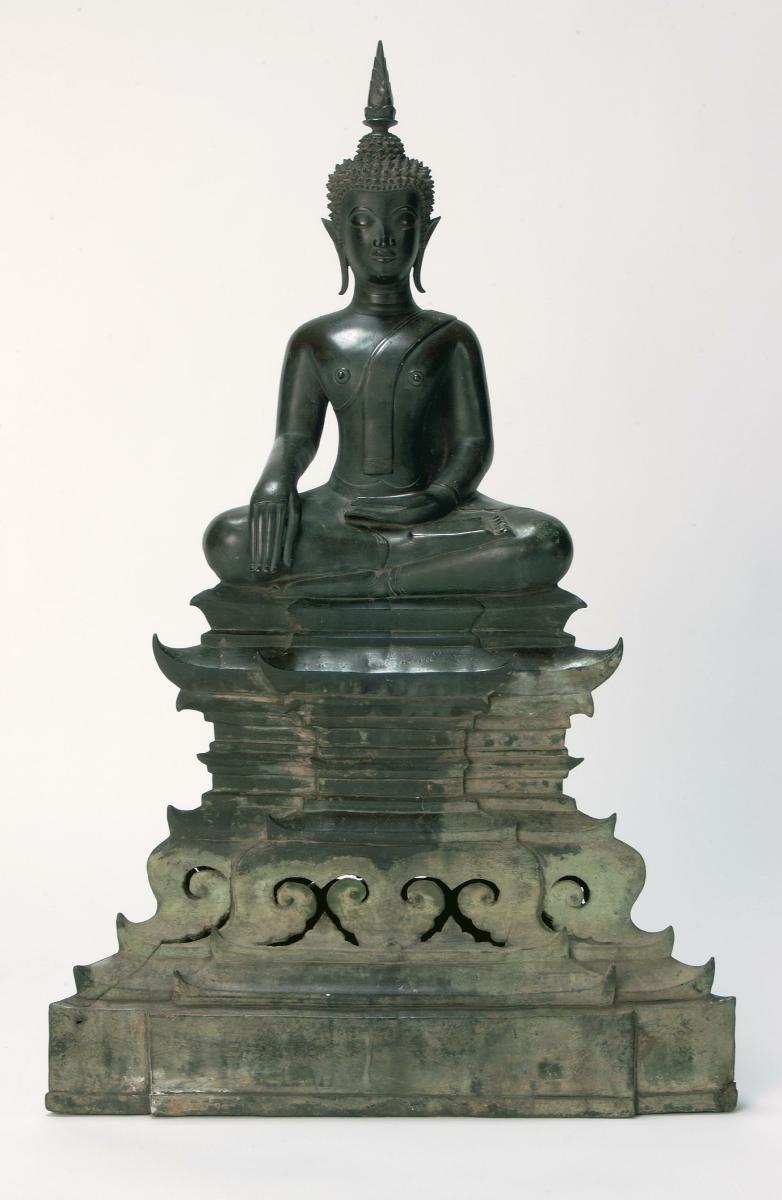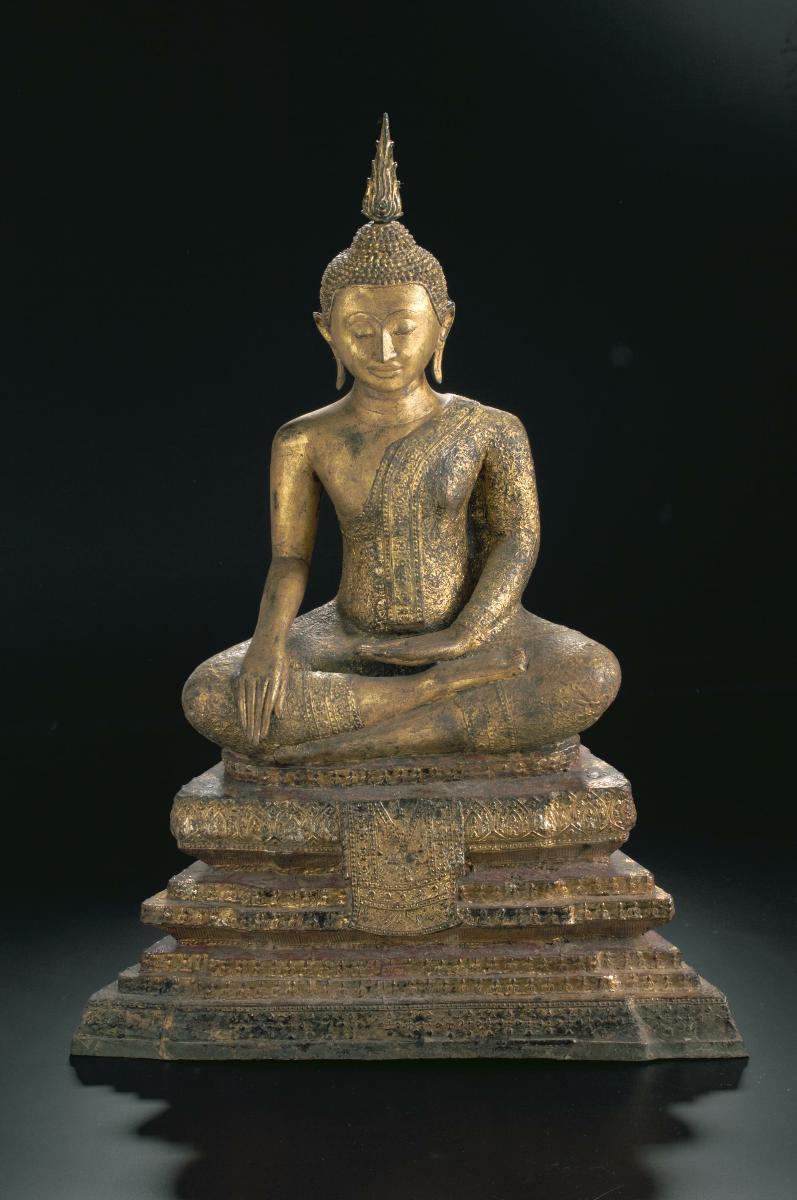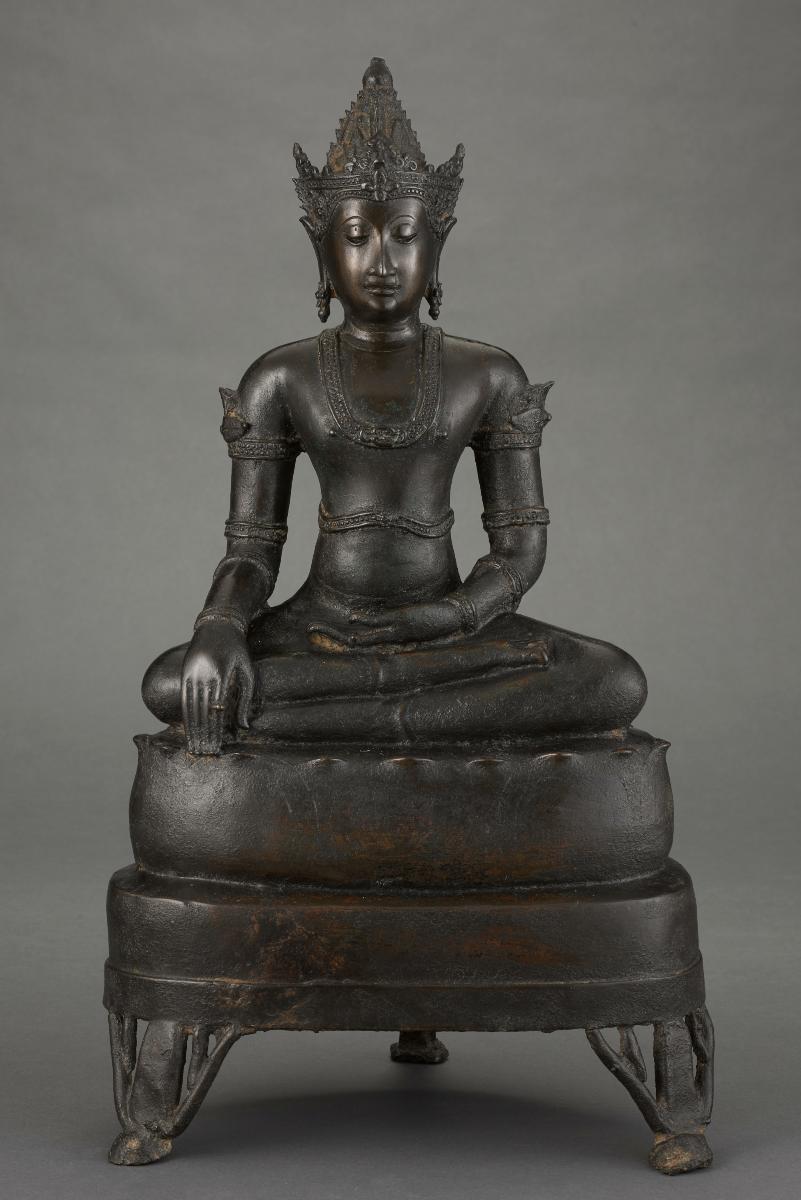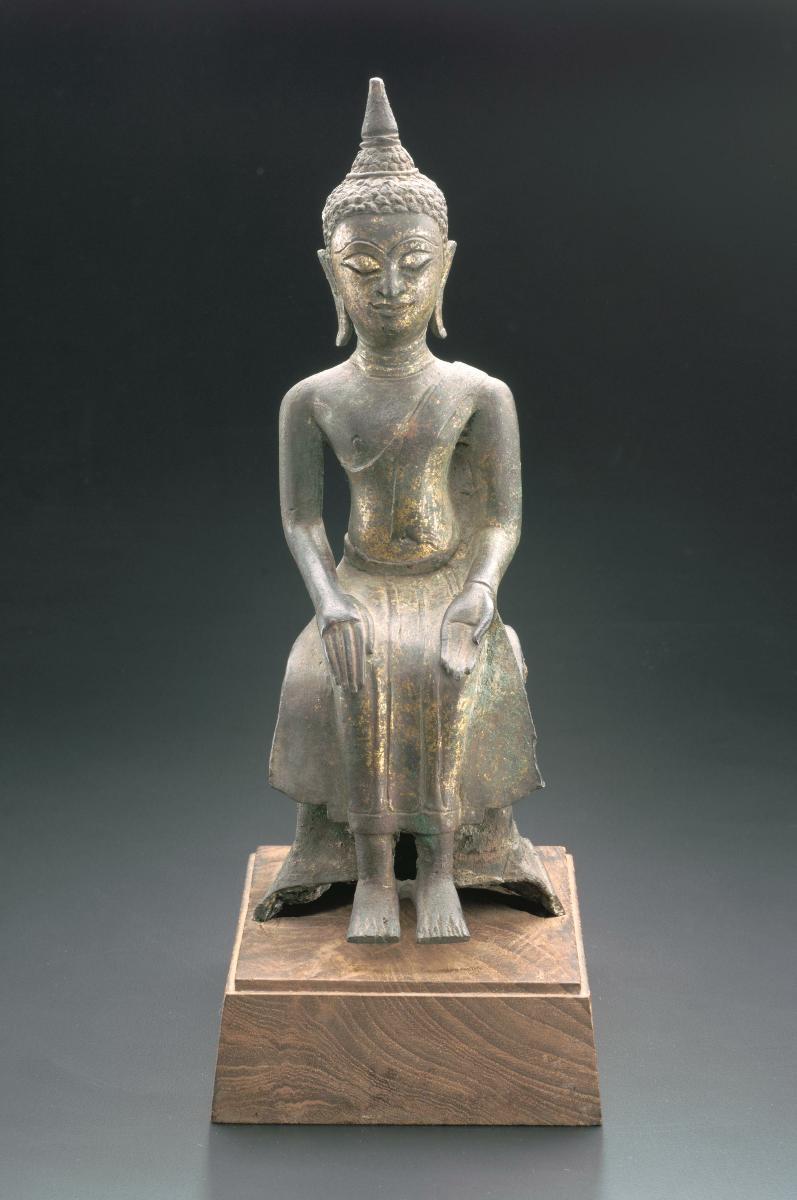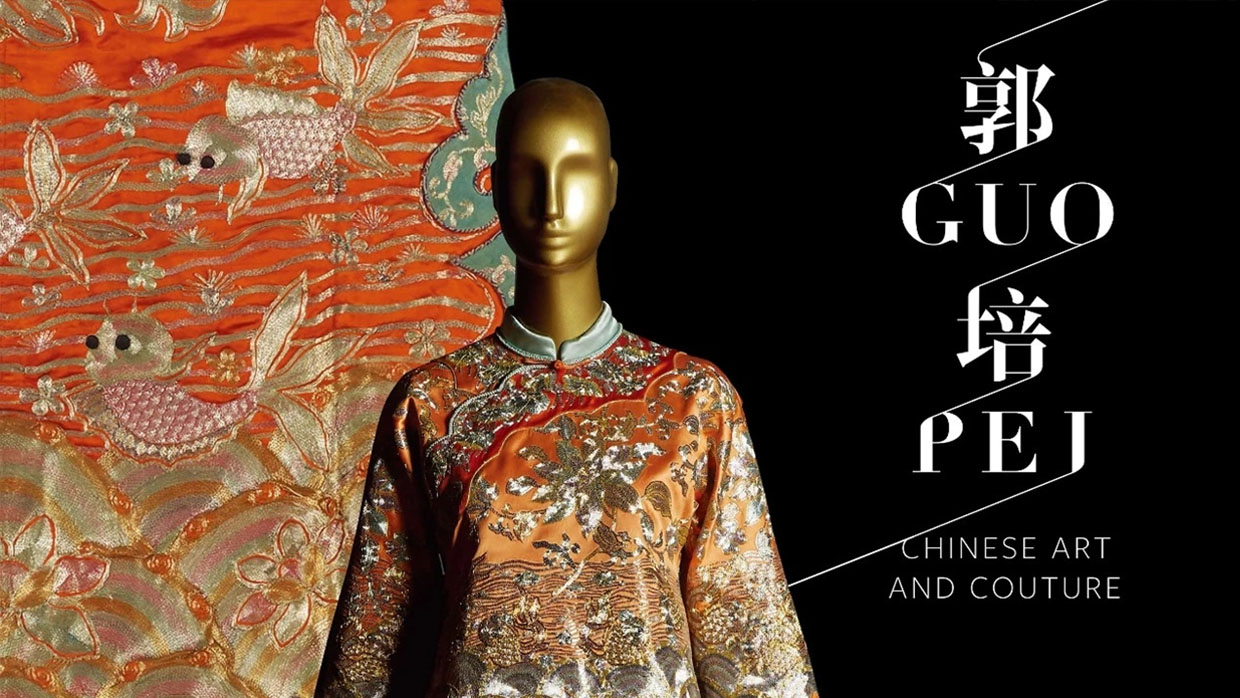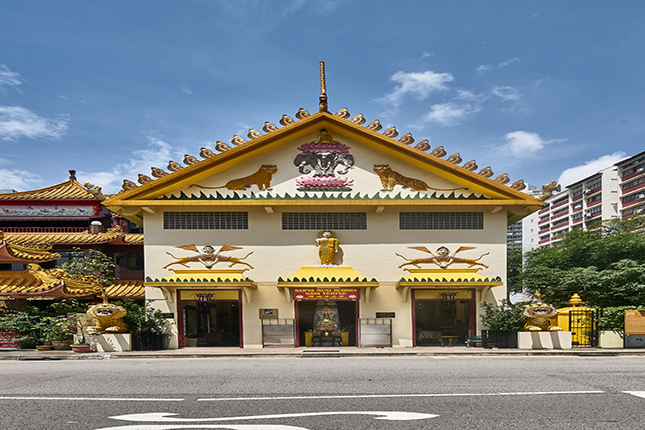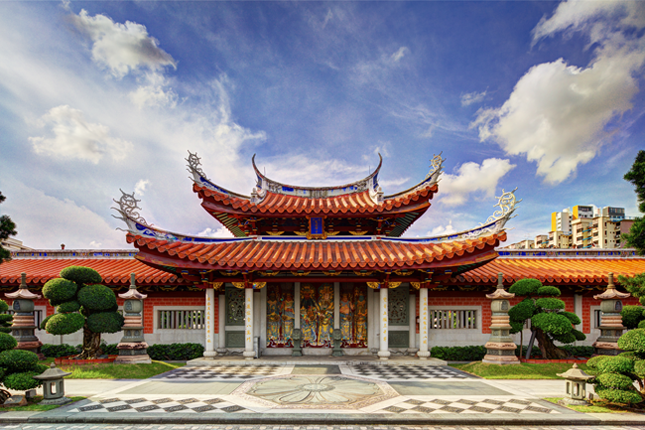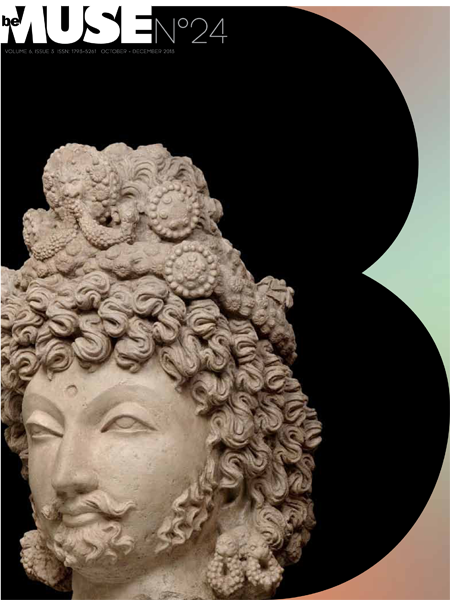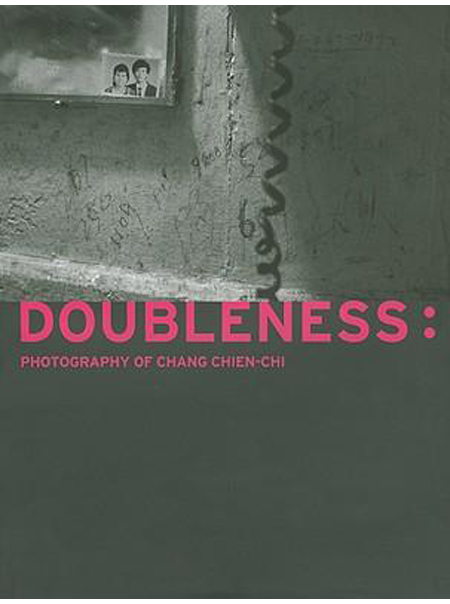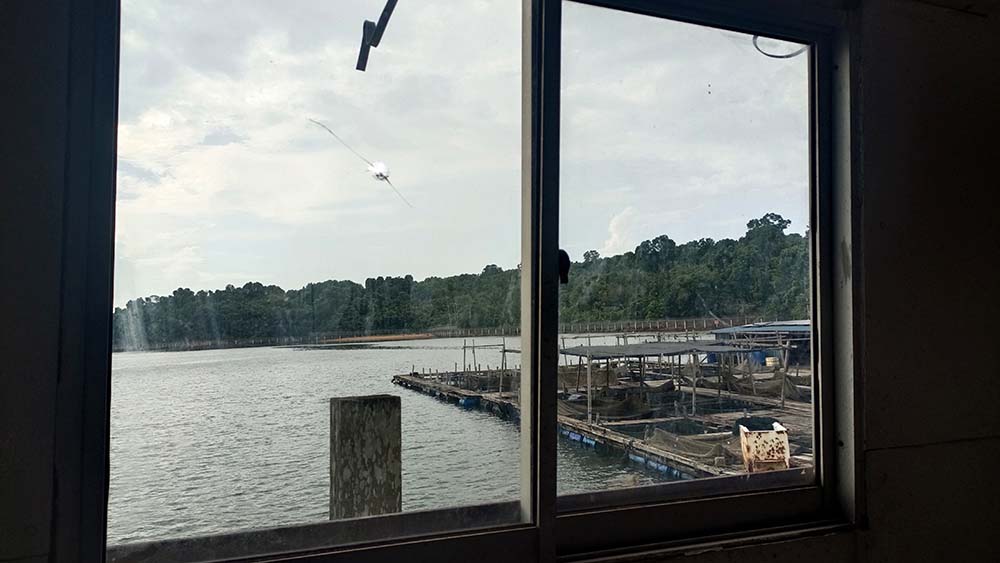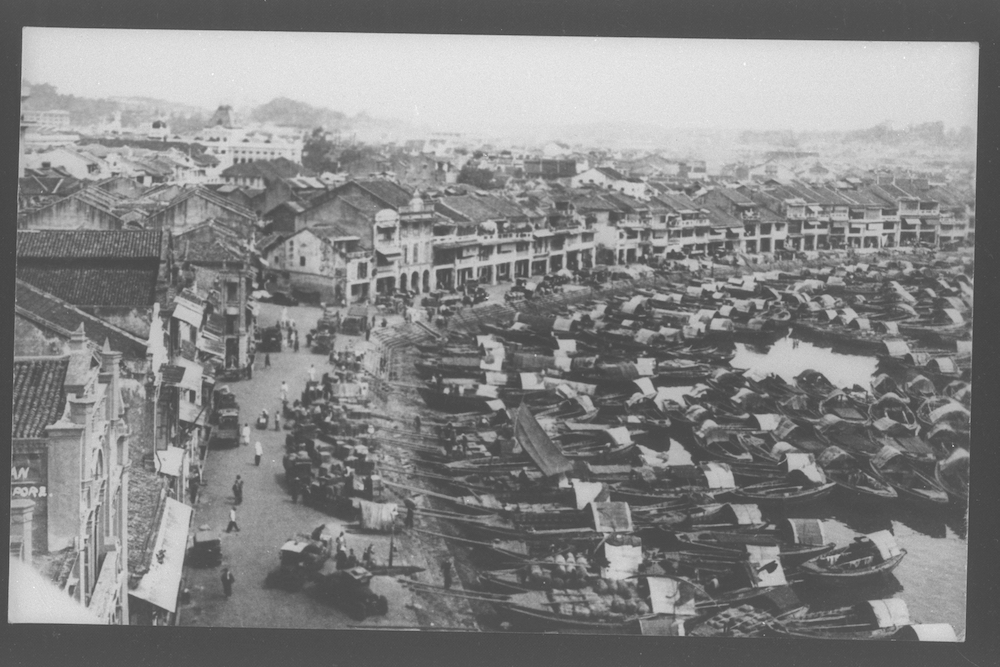This image of Buddha is seated on a double lotus base in bhumisparshamudra or the ‘earth-touching’ gesture. The fingers of the right hand extend towards the ground as the Buddha called the Earth Goddess to witness the power of his undisturbed concentration despite the forces of evil exerted by Mara. Traces of pigment are evident in the shallow incised delineations of the face, robes, and throne on this piece. Marble increasingly replaced carved sandstone images around the 17th century or late Ava Period (1364 – 1752), and continued to be produced from then onwards . The merit-making practice of donating images to the temple continues today, and carved marble images finished with lacquer, gilding and paint are still produced in Mandalay. A more localised Burmese style developed during the late Pagan period, following the decline of Buddhism in India, which was to lay the foundations for the later 18th century style of this piece. Images were increasingly carved in the round without any supporting back slab, and bhumisparshamudra became popular. The anatomical features had changed too. The torso had become heavier in appearance, and features such as the hair were reduced to a simple line which framed the face, whilst the mouth became bow-shaped. The ears were heavier too with lobes extending down to touch the shoulders. Hands and feet as seen here were more stylised - fingers were of equal length and feet assumed slab-like forms. The robes are delineated with lightly incised double lines, with a flap hanging down the left shoulder. The propensity for flatter surfaces especially in later images saw the use of paint to highlight areas such as the facial features.




